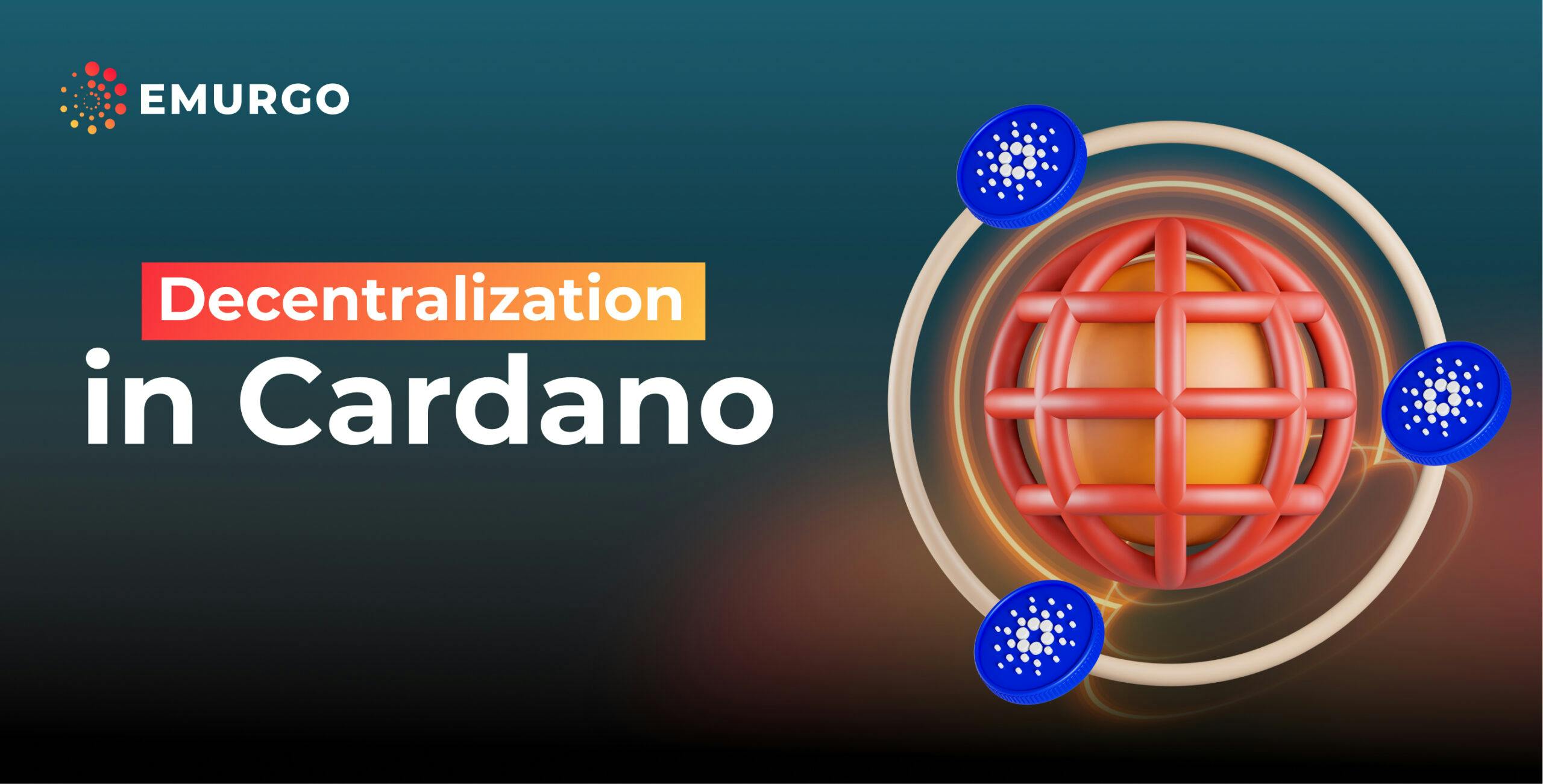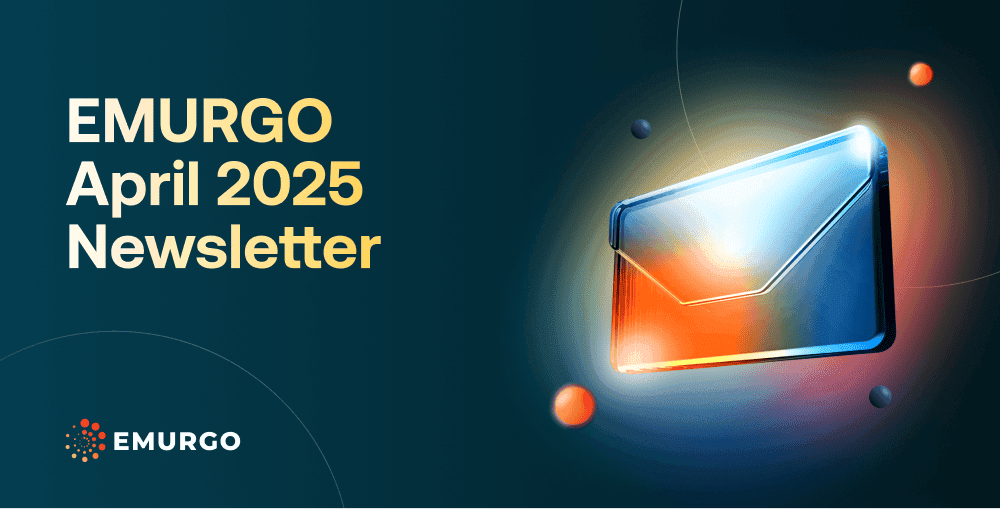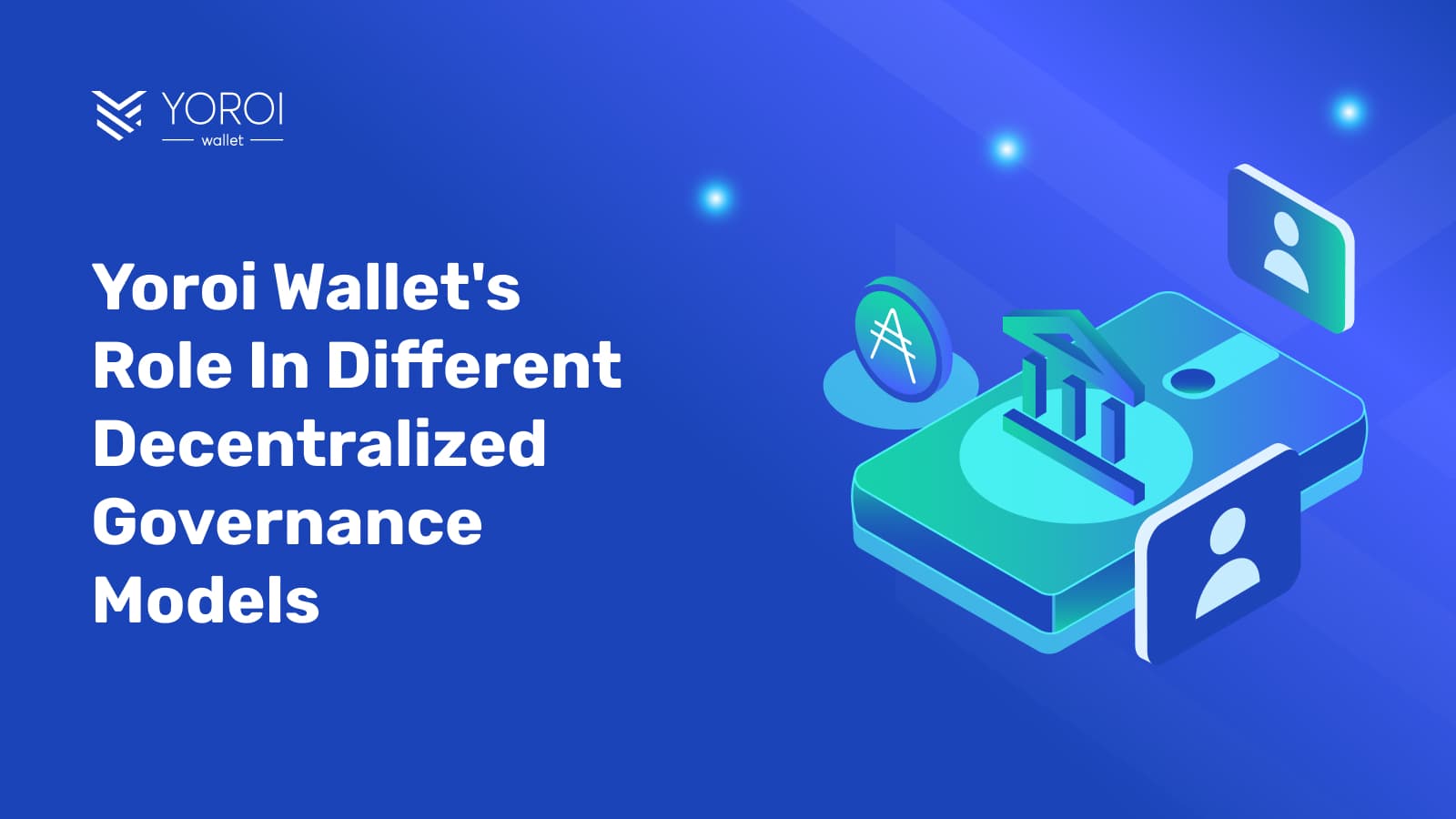Keep in mind that these topics only provide educational information and are in no way financial advice.
Decentralization is a core ethos of the global blockchain community which plays a big part in the overall Web3 movement. Yet, it’s often misunderstood and can sometimes be confusing, especially to blockchain and crypto beginners in the community.
As the Web3 movement gains more adoption by individuals and organizations, the focus will increasingly be placed on the level of decentralization of any given blockchain protocol. This creates design, regulatory, and adoption ramifications.
Let’s explore decentralization in blockchain further, especially Cardano decentralization, and how this affects the future of Cardano.
What is blockchain decentralization?

Decentralization is the distribution of functions, decision-making, and information away from a centralizing single entity (be it an individual, organization, group, or consortium) and into a network of participants.
There are both technical aspects and governance considerations when it comes to decentralization.
In the technology world, decentralization is more of a spectrum than a binary property. For example, services like Twitter, Netflix, Facebook, etc. have some characteristics of a decentralized system. Each of these apps has nodes (data servers) that relay information to each other, and they have to go through a consensus round to display tweets on a user’s feed, for example.
However, the key difference is that in the systems above, there are central nodes that can force certain decisions and overrule other nodes. In those cases, that type of network architecture is known as “distributed.” Decentralization, on the other hand, can be thought of as a step further beyond “distributed.”
In a decentralized system, the nodes are not able to force any decisions on the other nodes. Every new decision or action taken by the network has to be the result of a consensus round. For this reason, decentralized networks are censorship-resistant and also permissionless in that anyone can join the network and run a node.
The most popular blockchains aim to be open-source and decentralized. Depending on the blockchain network, they can utilize different types of consensus. For example:
-
- Proof-of-stake is a type of decentralized consensus where anyone can participate by using their “stake” or cryptocurrency, to secure the network with much less computational needs than in proof-of-work. It is considered more environmentally friendly and sustainable than proof-of-work due to using significantly less energy. Cardano utilizes proof-of-stake to secure its network.
-
- Proof-of-work is a decentralized type of consensus where anyone can join as a node, contribute computational power, secure the network, and then compete to receive rewards. But as the blockchain network grows, the increasing competition by nodes pushes out the smaller participants and it eventually becomes dominated by the biggest participations. This type of decentralized consensus also consumes significantly more electricity than other types.
What are the benefits of decentralized blockchains?

Compared to a centralized network, decentralization offers many advantages:
-
- First and foremost, decentralized blockchains and systems are more robust than centralized ones. They can keep consistent records of events and can tolerate a substantial loss of nodes without compromising the network due to its inherent distribution worldwide.
-
- Second, decentralized systems are censorship-resistant. The nodes that maintain the network are located all over the world. This means they are not under the jurisdiction of any single government or regulatory agency. This makes them accessible to virtually anyone with an internet connection. In a decentralized blockchain, the code is open-source and anyone can join the network as they wish and help secure the network by running a copy of the blockchain in real time.
-
- Third, easier data availability and recovery. The nodes on the network contain a complete copy of the history of the entire blockchain. This makes it very easy to retrieve information from the networks and destroying such information is extremely difficult.
-
- Fourth, optimized asset propagation as decentralization can help streamline the dispersion of assets and guarantee services are delivered with better execution and consistency at a global scale in real time. Transactions conducted over decentralized blockchains can transfer value and settle in an instant, with transparent records and verification available.
How decentralized is Cardano?
There are many ways to consider decentralization and measure it although this is an evolving concept at the moment due to blockchain’s emerging tech status.
Until then, we’ll have to use some metrics to approximate decentralization. One of the most common is the number of validator nodes.
In Cardano as of the moment, there are more than 3,150 stake pools that are running for users to delegate their stake and help secure the network in a decentralized manner. These validators are found all around the planet, making the Cardano network a very decentralized and permissionless network for everyone.
Furthermore, as an open-source decentralized blockchain, many developers are building decentralized applications projects on the network that allows anyone to use their project’s services, with more than 120 projects already launched and more than 1,240 projects currently building [1].
How decentralized will Cardano be in the future?
Most of the industry is focused on what decentralization means in terms of technology such as the number of nodes, the safety guarantees of the consensus protocol, etc. Very few have considered other aspects.
At the start, we stated that decision-making was part of decentralization. But this aspect has less to do with technology and more to do with the governance structure of the network or blockchain by its stakeholders.
As of now and in the future, the Cardano network is focusing on governance by the worldwide community of Cardano developers, stake pool operators, academics, and other users. The objective is to put Cardano squarely into the hands of the community to run with a Constitution, governing bodies, voting rules, and other details after rounds of discussion and debate with the community.
In Cardano, this focus on community governance is the main pillar of its Voltaire era. As part of this era, there is a proposal called CIP-1694 which seeks to confirm many of the details mentioned above about how the Cardano network will be governed moving forward and to have it be a sustainable network.
CIP-1694 which is the on-chain governance component of Cardano is supported by Intersect, a Cardano member-based organization that will serve as Cardano’s off-chain governance component to steward the Cardano ecosystem forward with decentralized governance by its members. The Cardano Constitution will also be another pillar that will serve as the guiding document to lay out the decentralized framework and policies of the Cardano ecosystem.
In the long run, this will brand Cardano as not only a decentralized blockchain network from a technological perspective but also a community governance one, and become a main technological platform of the Web3 movement.
Read more: All you need to know about Cardano’s Voltaire era
Follow EMURGO for the latest Cardano announcements

To stay on top of the latest announcements and news related to Cardano, follow EMURGO on Twitter and the official channels listed below.
About EMURGO
-
- Official Homepage: emurgo.io
-
- Twitter (Global): @EMURGO_io
-
- YouTube: EMURGO channel
-
- Discord: EMURGO Community
-
- Facebook: @EMURGO.io
-
- Instagram: @EMURGO_io
-
- LinkedIn: @EMURGO_io



